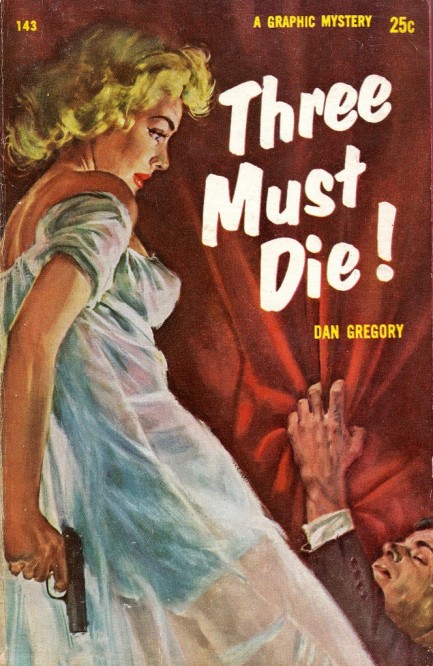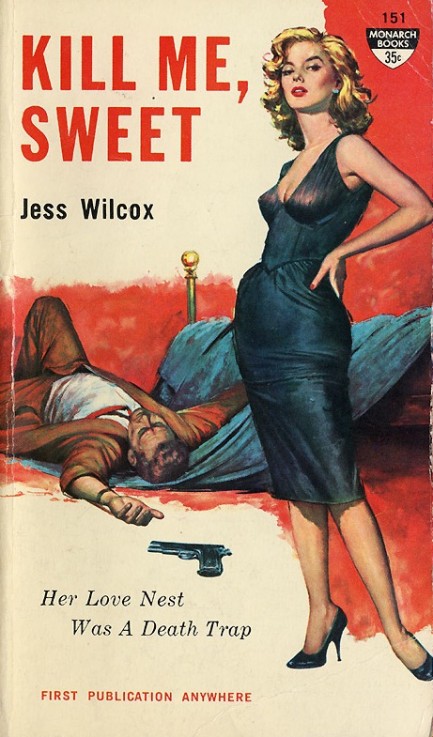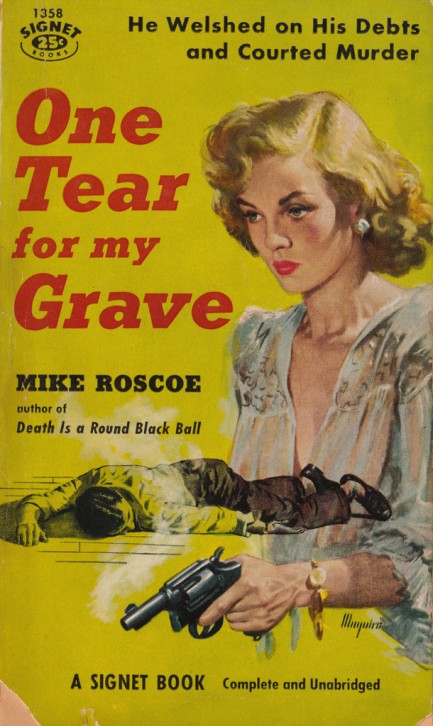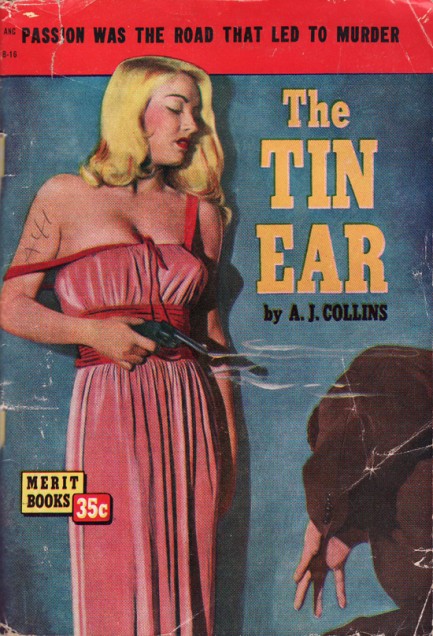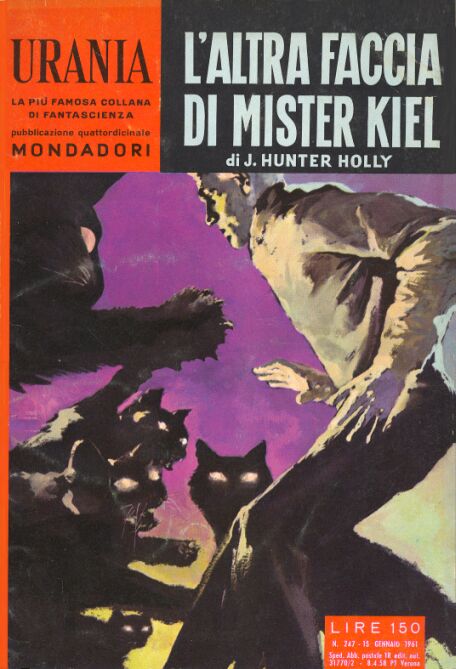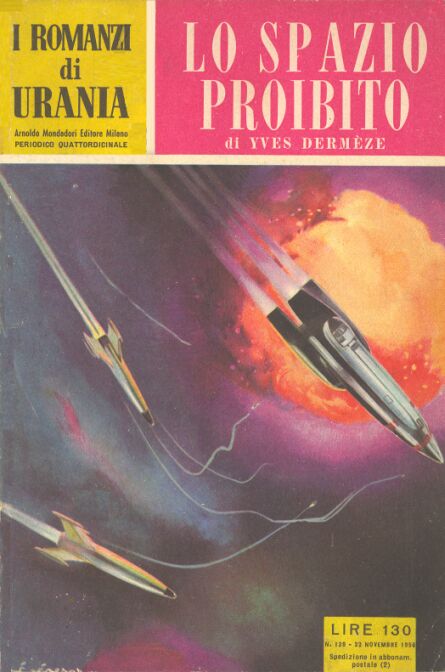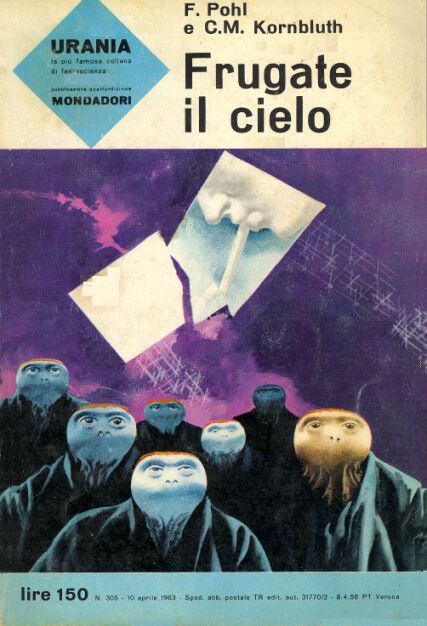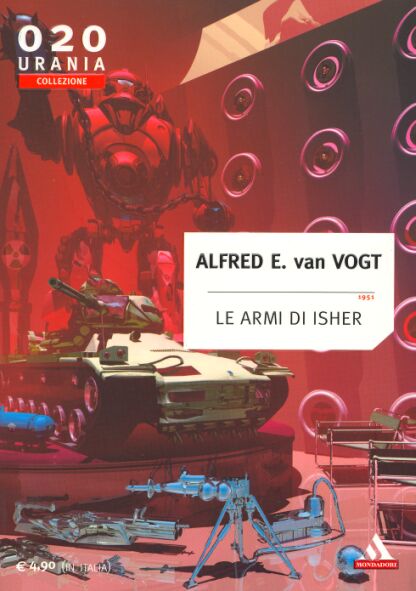 Come along and ride on a Fantastic Voyage. 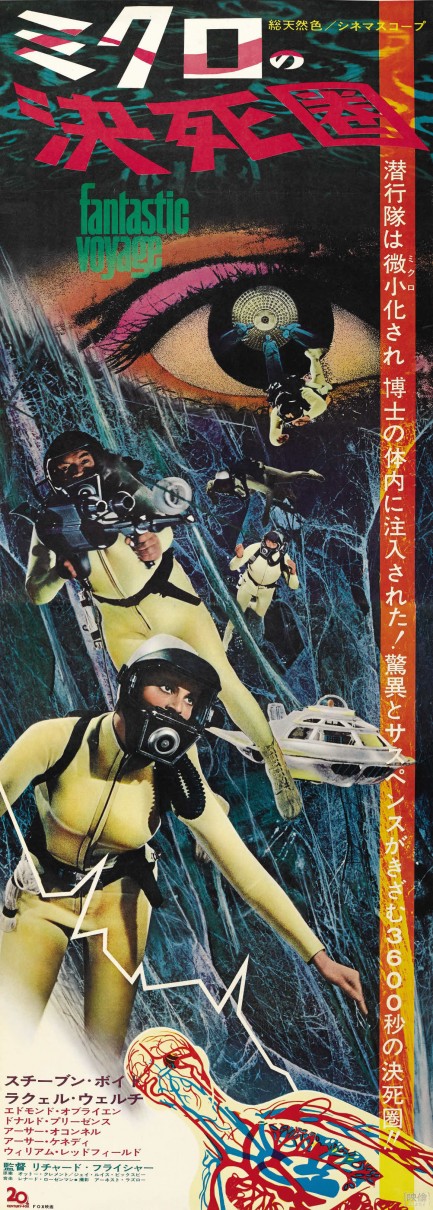
There's something about sci-fi movies from the late 1960s that makes them so pleasing to watch. The source material was innovative and ambitious thanks to a crop of fresh new sci-fi novelists, while cinematically, capabilities in special effects, a trend toward elaborate sets, and bold color thanks to improved film processing techniques resulted in more believable and engaging final products. Fantastic Voyage, for which you see a beautiful Japanese poster above, benefits from all those elements. We queued it up and watched it straight through, impervious to distraction, marveling at the visionary look of it and its fun story of a team of doctors and scientists reduced to microscopic size and injected into a man's circulatory system to find and remove a blood clot deep in his brain. Thanks to its provenance as a novel by Isaac Asimov it's just scientifically convincing enough—once you accept the idea of a shrink ray—to aid suspension of disbelief. A good popcorn muncher, this one, with a great cast that includes Raquel Welch, film noir legend Edmond O'Brien, and Donald Pleasence. Highly recommended. Fantastic Voyage opened in the U.S. in August 1966 and reached Japan today the same year. 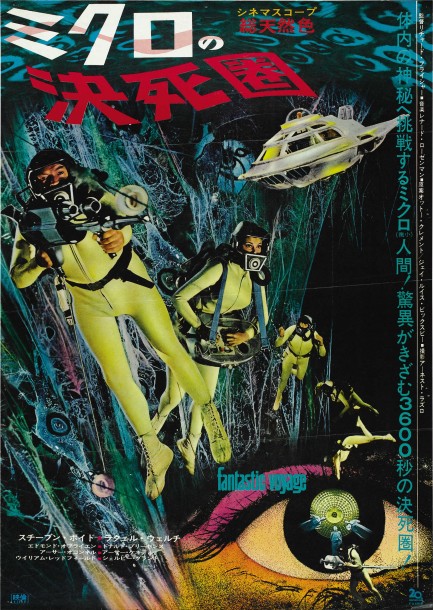 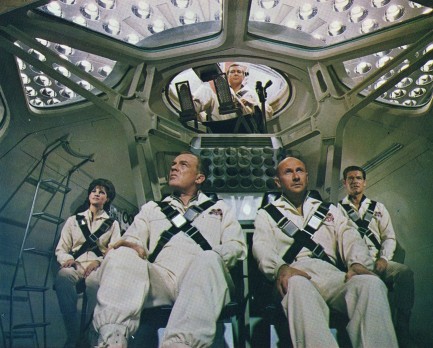 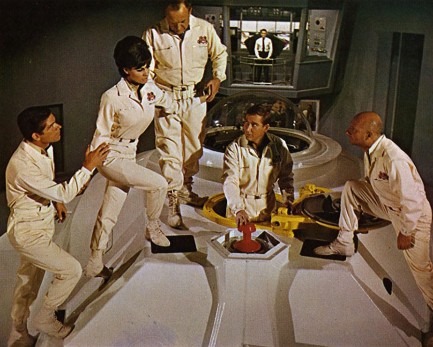 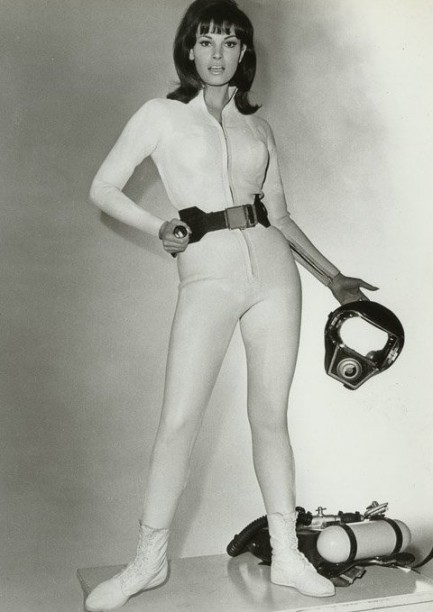 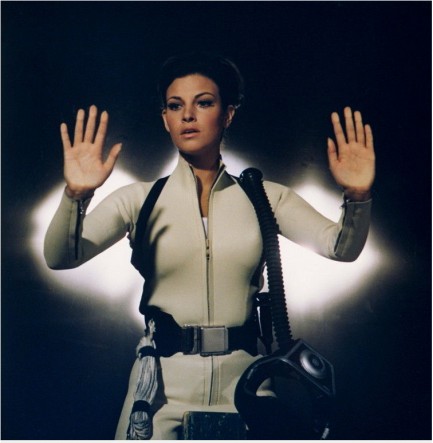 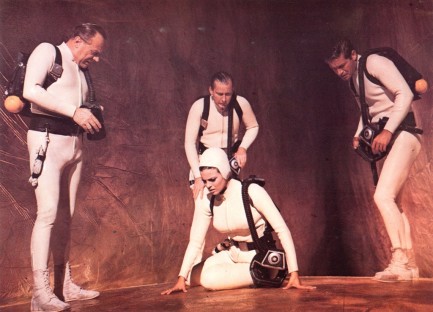 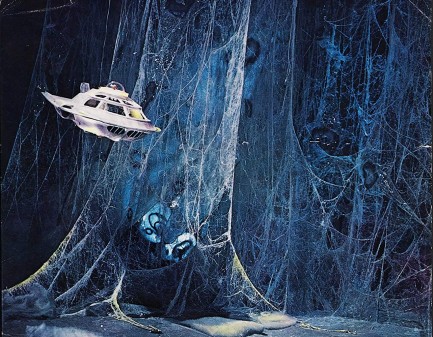 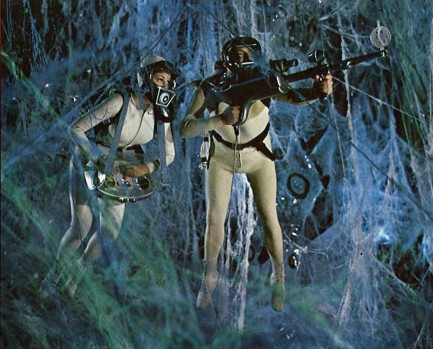 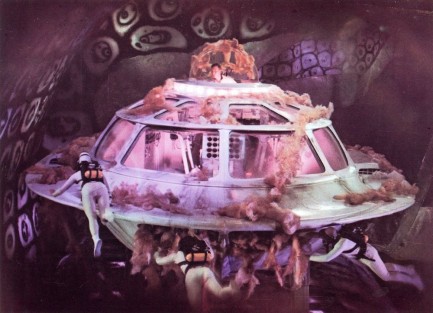 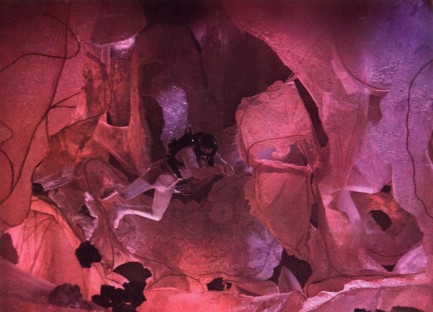 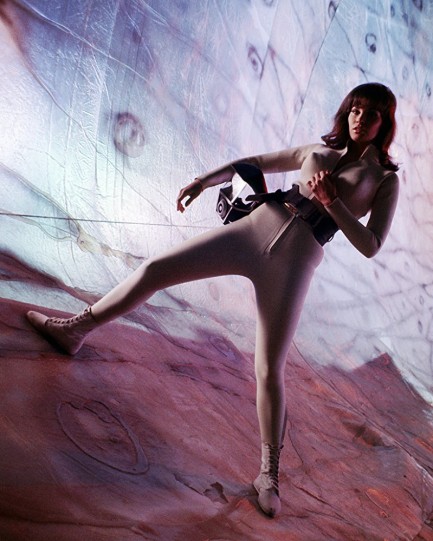 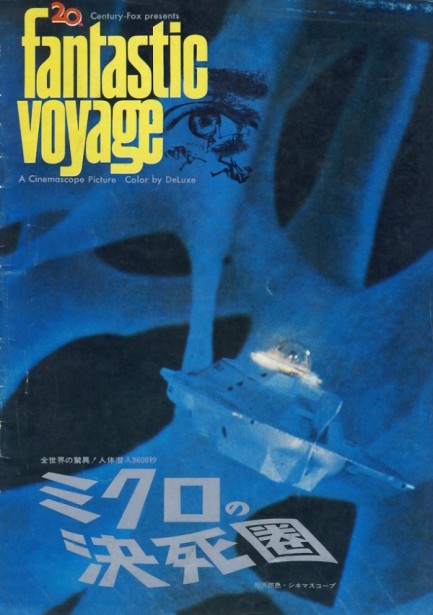 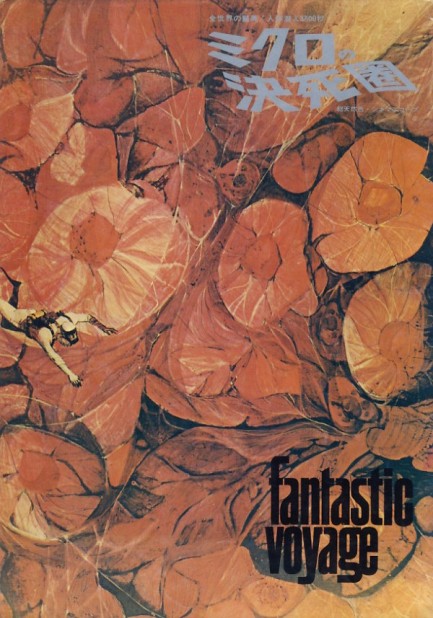 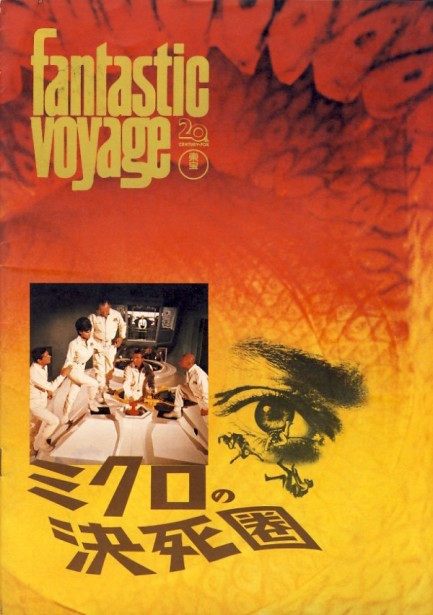 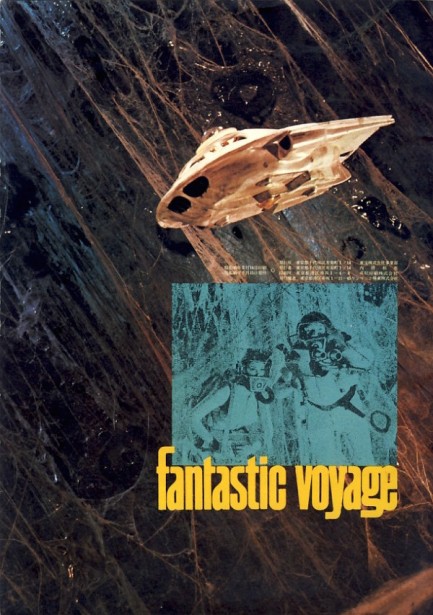
 Better killing through chemistry. 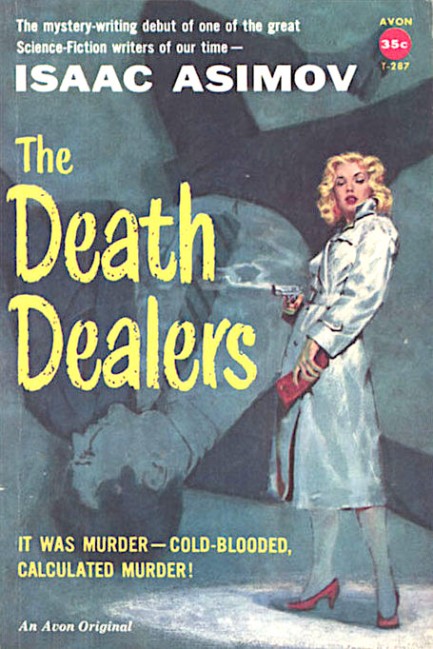
Above is a 1958 Avon edition of The Death Dealers, sci-fi writer Isaac Asimov's first foray into the mystery genre. When a chemistry professor's best student dies of an apparent lab accident the professor ponders taking over the protege's cutting edge research as a way to impress peers—and perhaps earn a long denied tenure. But he's deduced there's a murderer loose and is worried the police might deduce it too, and consider the valuable research a perfect motive. While Asimov lays out the killing and resulting dilemma in a methodical way, and the world of chemists on a college campus is one he knew well as a professor of biochemistry at Boston University, the linear nature of the plot and emotional coolness of the characters don't allow the mystery to truly grip the reader. Yet the book is very readable—the details of life on campus, the politics, the maneuvering for that elusive tenure all help to make up for the other deficiencies. Add to that the backdrop of advanced chemistry, the detailed but not overwrought scientific descriptions of experiments and processes, the fact that most of the characters are geniuses in their field, and the end result is something that works reasonably well. But there are so many mystery masterpieces out there we can only feel good recommending The Death Dealers to voracious readers in the genre. Or to Asimov fans. Neither group will be disappointed. All others, no guarantees. 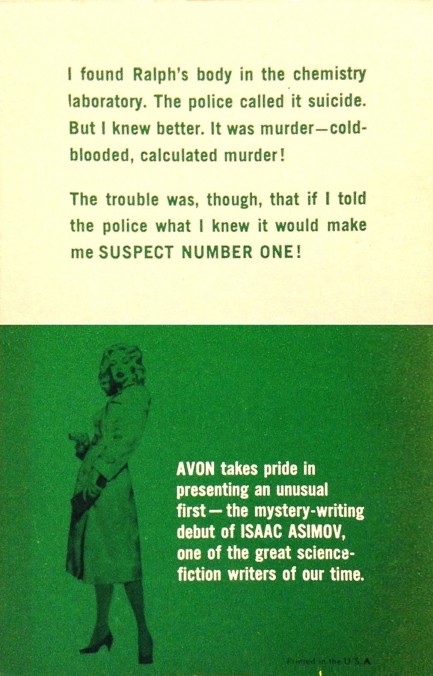
 Strange adventures on other worlds. 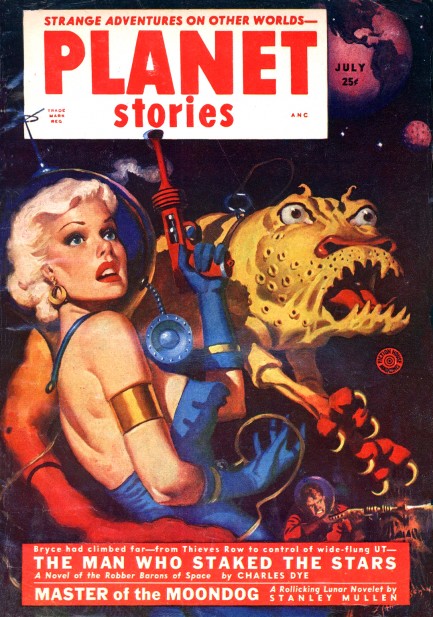
Above and below are ten covers of Planet Stories that appeared between 1948 and 1952, with beautiful, lurid, pulp art from Allen Anderson. The magazine published only interplanetary adventures, and its mix of rocket ships, swashbuckling heroes, space princesses, and hideous aliens proved extremely popular. Some of the many writers whose work graced its pages include Isaac Asimov, Ray Bradbury, Leigh Brackett, John D. McDonald, Philip K. Dick, and Clifford D. Simak. Planet Stories ran seventy-one glorious issues, from 1939 to 1955. How could you not be excited to read when this is what awaited you on the newsstands? 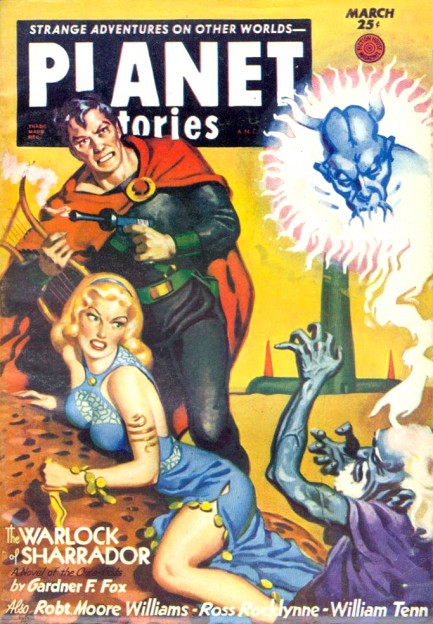 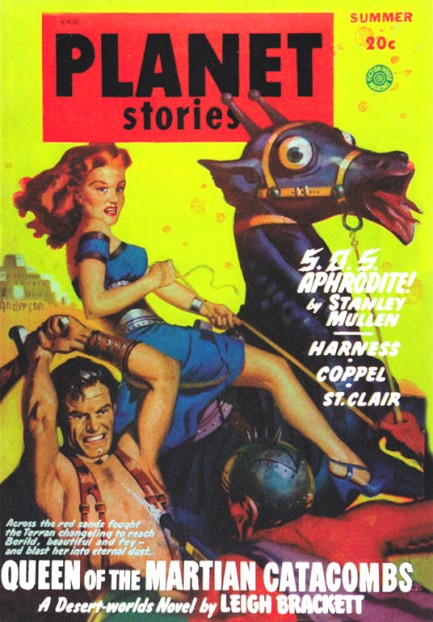 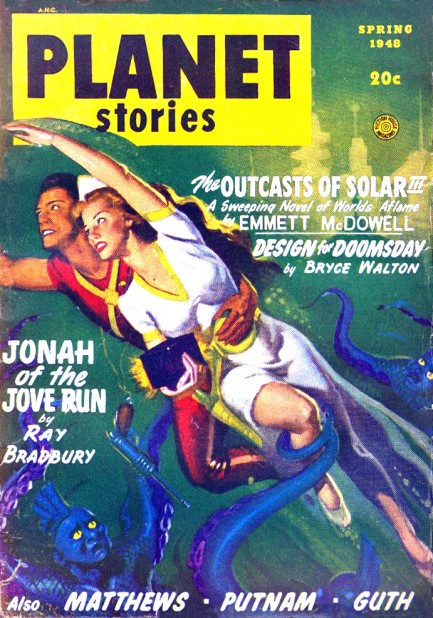 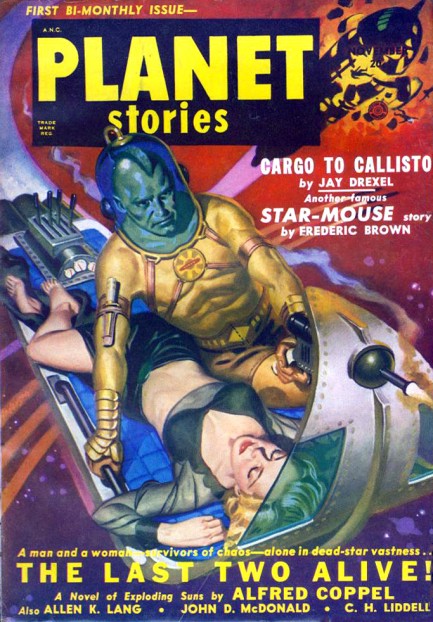 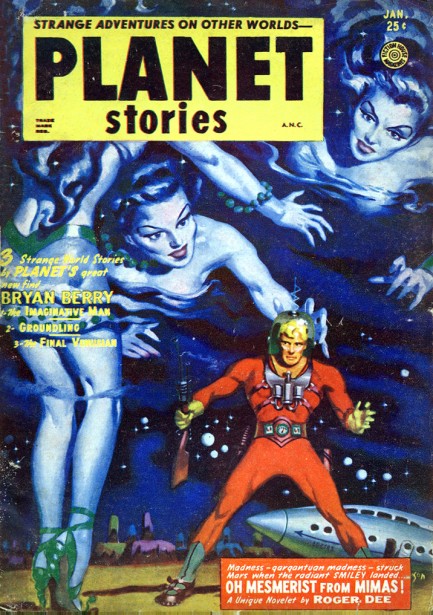 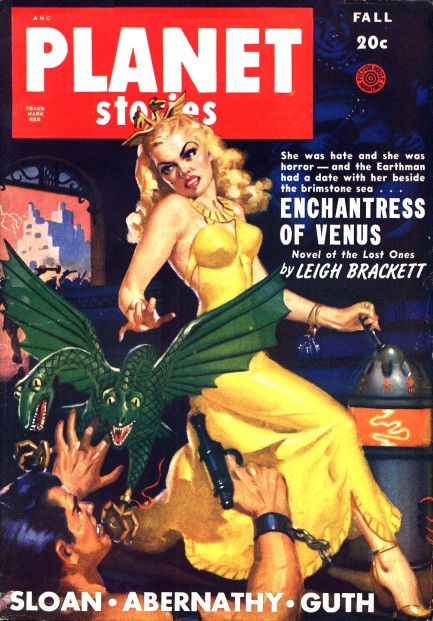 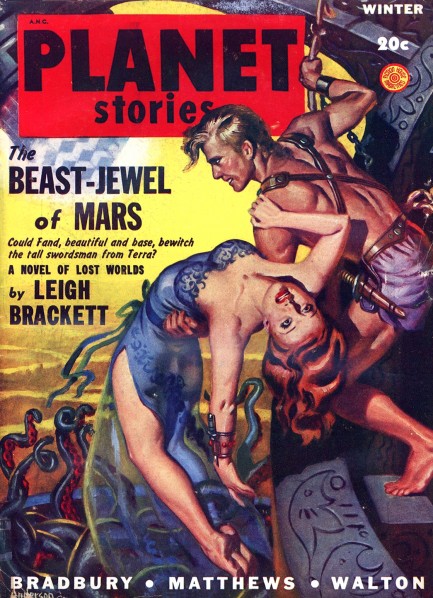 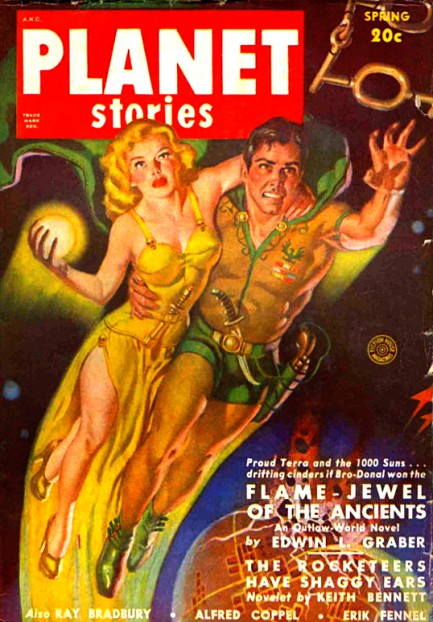 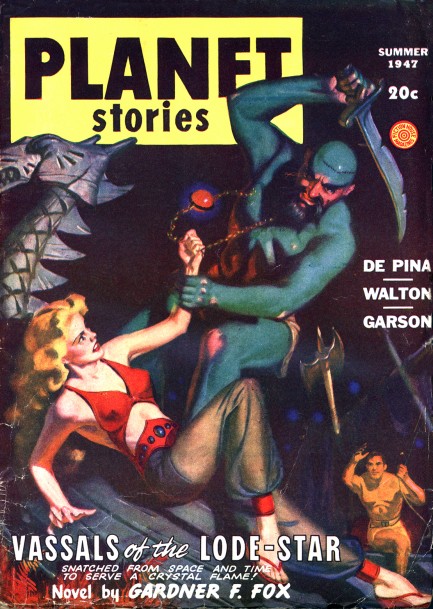
|
 |

The headlines that mattered yesteryear.
2003—Hope Dies
Film legend Bob Hope dies of pneumonia two months after celebrating his 100th birthday. 1945—Churchill Given the Sack
In spite of admiring Winston Churchill as a great wartime leader, Britons elect
Clement Attlee the nation's new prime minister in a sweeping victory for the Labour Party over the Conservatives. 1952—Evita Peron Dies
Eva Duarte de Peron, aka Evita, wife of the president of the Argentine Republic, dies from cancer at age 33. Evita had brought the working classes into a position of political power never witnessed before, but was hated by the nation's powerful military class. She is lain to rest in Milan, Italy in a secret grave under a nun's name, but is eventually returned to Argentina for reburial beside her husband in 1974. 1943—Mussolini Calls It Quits
Italian dictator Benito Mussolini steps down as head of the armed forces and the government. It soon becomes clear that Il Duce did not relinquish power voluntarily, but was forced to resign after former Fascist colleagues turned against him. He is later installed by Germany as leader of the Italian Social Republic in the north of the country, but is killed by partisans in 1945.
|

|
|

It's easy. We have an uploader that makes it a snap. Use it to submit your art, text, header, and subhead. Your post can be funny, serious, or anything in between, as long as it's vintage pulp. You'll get a byline and experience the fleeting pride of free authorship. We'll edit your post for typos, but the rest is up to you. Click here to give us your best shot.

|
|
































